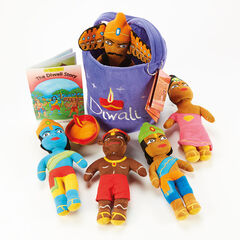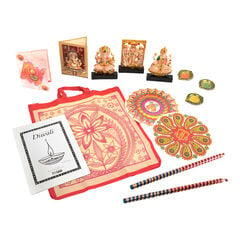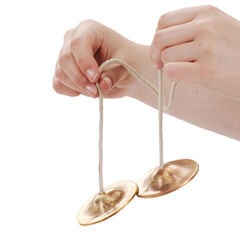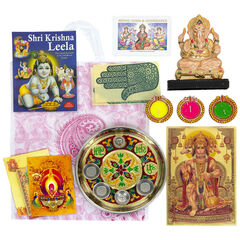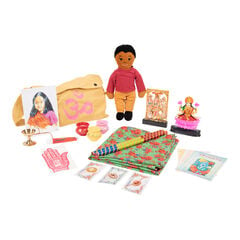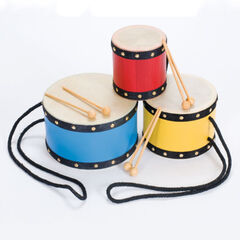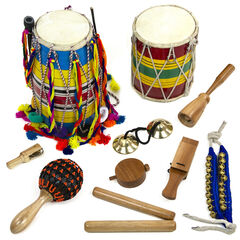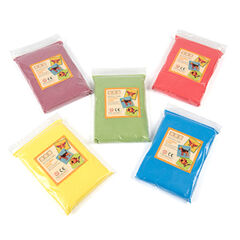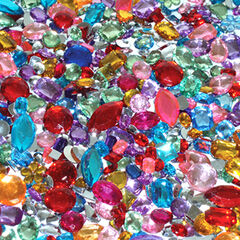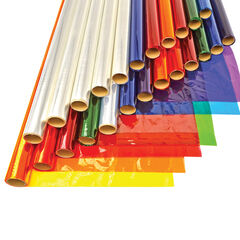Diwali Arts and Craft How To’s
Bring a burst of colour into the classroom and celebrate the festival of Diwali through the fun of ‘making’.
Explore our collection of easy children’s Diwali arts and crafts activities written with easy-to-follow step-by-step instructions.
- Handmade Folded Paper Diya Garland
- Hanging Tealight Diwali Card Decorations
- Painted Diwali Paper Diya Decorations
- Paper Diya Tealight Table Decorations
- Rangoli Stained Glass Effect Light Catchers
- Diwali Window/Tealight Card Decorations
- Diwali Light Up Wall Hanging Flower Decorations
- Decorative Rangoli Patterns and Suncatcher
Diwali Crafts
1. Diwali Handmade Folded Paper Diya Garland

What you will need:
A4 Coloured Paper or Lightweight Card
How to make:
Step 1
Choose the colours of paper to make the Diyas and cut to size. These were L21cm x W14cm which means you can make 2 x Diya’s from 1 piece of A4 paper. These can be made larger for bigger classroom displays!
Step 2
Take your first piece of paper and (on one end only) punch holes in the corners of the paper. Next, accordion fold the paper working your way down the full length of the sheet.
Step 3
Fold in half, open out and using clear tape stick two of the ends together. Make sure that the punched holes are on the outside as these will be used to thread the Diya’s onto string.
Step 4
Open out the Diyas shaping if needed and thread the string down through one end of your first Diya (trapping the string at the back of the fold to keep it neat) and up through the second hole, repeat to make your colourful Diwali paper garland.
Step 5
Add a candle wick using coloured card plus any further decoration to complete your Diya lamp wall decoration. (I’ve used holographic circles from the flower pack listed from which there may be further shapes that can be added to the Diwali garland).
2. Hanging Tealight Diwali Card Decorations

What you will need:
Holographic Card Stars Gold/Silver
Embroidery Thread (or cotton/string etc)
How to make:
Step 1
Decide on your colour range for each decoration you will need: 2 strips of card: 1 x L29.5cm x W5cm, 1 x 29.5cm x W3cm and 1 x glitter paper strip L29.5cm x W1cm.
Step 2
Taking your widest strip of card add decoration on one side using metallic pens, use PVA to add further sparking decoration adding gems, sequins etc. Decide which side with be the ‘front’ and colour a gold line along the edge of the card. Put aside to dry.
Step 3
Stick the strip of glitter paper down the middle of the 2ndpiece of coloured card. Allow to dry, then cut approx. 3cm off one end of the strip (to create the inner teardrop shape which holds the battery tealight).
Step 4
Take the shorter strip, bend and hold together at the top to form a tear drop shape, make sure the glitter paper is on the inside of the shape as this is to reflect the light from the tealight! Next take the wider piece of card and place on the outside of the first shape joining at the top (being careful to center the inner card strip). Staple/glue all layers together forming a double tear drop shape.
Step 5
Stick a length of thread or string at the top of the Diwali decoration so it can be hung up. Finish with an acrylic gem and/or holographic card stars.
Step 6
Place a battery operated tealight on the inside of the decoration and hang up!
3. Painted Diwali Paper Diya Decorations

If folding paper accurately is too difficult for your children, this is an easy Diwali children’s craft for you! Create the effect of folded paper by printing with paint enabling children to explore mark making using a ‘tool’ instead. Combine with some shimmering holographic pre-cut shapes so children can personalise their own colourful hanging garland.
What you will need:
Holographic Card Flowers Assorted
Embroidery Thread (or cotton/string etc)
How to make:
Step 1
Choose the coloured card you want the paper/card Diwali Diyas to be made from, next choose a contrasting colour of ready-mixed paint so the lines of paint will stand out when printed.
Step 2
On a sheet of ‘practice’ paper print a semi-circle of lines by dipping the edge of a lolly stick (full length) into ready mix paint. Always starting from the same position print in a ‘fan’ shape keeping the spacing ‘equal-ish’ between each line.
Step 3
When dry, cut out the semi-circle, then cut little semi-circular shapes on the edge between each printed line to give the impression of a 3D ‘folded’ shape. Repeat the process for all Diyas wanted for the wall hanging decoration.
Step 4
Create a flame shape for each Diya layering coloured card for a more decorative effect. Holographic or glitter paper adds that extra special touch!
Create a second ‘tier’ for your decoration using the same size Diyas or smaller as the made example illustrates.
Step 5
Children can now use their creative flair and imagination to draw, colour and cut out Lotus flowers to add to the decoration or used precut shapes in the Holographic Card Flower Pack (I stuck some of the shapes together to make lotus flowers).
Step 6
Plan how the garland is going to look using all the made elements and then using string or coloured embroidery threads in bright colours assemble the garland sticking the Diyas to the threads with clear tape on the back.
4. Paper Diya Tealight Table Decorations

What you will need:
Bioglitter Assorted Craft Glitter
How to make:
Step 1
Cut a strip of coloured card to wrap around the middle of a battery operated tealight, approx. L13cm x H2.5cm.
Step 2
Create a template to make each petal. Draw the shape onto paper pointed like a petal at the top, square at the bottom. From point to bottom mine is approx. H6cm, W3cm. Cut out the petal shape and draw onto a variety of coloured card. Cut out the shapes. You will need approx. 5 for each tealight.
Step 3
Decorate each petal (only the top half) using metallic pens, mirror backed gems, glitter shapes, holographic card shapes etc.
Step 4
Wrap the strip of card around the middle of the tealight and tape in place, next take each decorated petal and stick onto this card using clear tape on both sides of the bottom of the petal.
Step 5
Use glitter to cover up the clear tape around the tealight. Paint PVA onto the tape then sprinkle with glitter. To add extra sparkle, add a little PVA and glitter around the edge of the card inside the decoration (not all the way down as this will prevent the tealight being able to be removed/added).
Step 6
5. Rangoli Stained Glass Effect Light Catcher

What you will need:
How to make:
Step 1
Take a piece of clear film (still with its backing sheet on) and use a piece of adhesive tack in each corner to secure on the table. Using a permanent marker pen draw a Rangoli inspired design onto the surface of the self-adhesive clear film. This could be done free hand or a design traced from a printed sheet (the clear film with its backing is still semi-transparent enabling a tracing to be made). Choose or create a design that matches your children’s skill level – the simplest can often be the most effective!
Step 2
Next remove the backing from the self-adhesive film, put the film sticky side up and use adhesive tack to hold the design in position on a tabletop making it easier to work on and preventing the sticky film from rolling up. NB. This could also be fun tacked on a window so children could see the sunlit colours as they add the tissue paper.
Step 3
Decide on the colours to enhance the design of the Rangoli pattern, tear up pieces of coloured tissue paper and press onto the sticky surface filling in the pattern. NB. This technique doesn’t have to be perfect and the overlapping of tissue paper, whether it’s the same colour or different, still creates a beautiful stained-glass effect.
Step 4
Once the design is fully covered in tissue paper put the non-stick backing back over the design – it will stick around the edge where no tissue has been placed (This makes it easier to cut around the edge of the circle). Leave approx. 1cm of the undecorated clear film on the edge of the Rangoli design as this will be used to stick the suncatcher to the window.
Step 5
Peel off the backing and stick to the window, stand back and enjoy the beautiful stained-glass artwork that’s been created.
6. Diwali Window/Tealight Card Decoration

What you will need:
How to make:
Step 1
Take an A4 piece of card and turn the sheet so it’s landscape. Next fold the sheet equally into four like a concertina.
Step 2
Children can practice their cutting skills cutting shapes into the side of the card with 2 folds (when opened out you’ll see that these create the designs on the ‘outside’ of the decoration – I recommend trying this out on wastepaper first so that children can experiment with shapes they can cut & create).
Step 3
In the one remaining fold (which will be on the opposite side of the folded sheet to the ones that have just been cut) cut more designs, these will create the decorative effect in the centre of the decoration.
Step 4
Whilst still folded cut both sides of the top card to create a more interesting, shaped top. Open out your card to see the design that’s been created.
Step 5
Choose which is going to be the back of the decoration and, using larger pieces of cellophane than the areas to be covered, glue the cellophane over the ‘holes’ to create a stained-glass window effect when viewed from the front.
Step 6
Add further shimmering decoration using metallic pens on the front of the decoration.
Step 7
Either place by a window to light the decoration with natural light or place on a table and add two tealights at the back to bring out the jewel colours of the cellophane.
7. Diwali Light Up Wall Hanging Flower Decoration

What you will need:
Giant Mirror Backed Acrylic Gems
How to make:
Step 1
Fold a paper plate in half and cut petal shapes into the edge of the plate.
Step 2
Open out the plate and paint it with pink ready mixed paint (I’ve used a mix of white and red to create the tone I wanted).
Step 3
Cut four large leaf shapes from coloured card to attach to the bottom of the flower, two on each side. Fold the leaves down the middle to create a 3D shape.
Step 4
The tealight needs to be raised up in the decoration so you can see the light lighting up the flower’s petals. To do this create the ‘cradle’ that holds the tealight in place made from a strip of coloured card. This cradle of card also forms the ‘U’ shape of the flower. Cut a strip of card approx. 2cm x 7cm and stick halfway up the inside of the flower.
Step 5
Make a decorative tassel using brightly coloured embroidery threads/yarn. Cut lengths of the threads, fold in two and put a thread around the loop forming the hanging thread. Tie the tassel threads together at the top and add a decorative bead to finish off.
Step 6
Sandwich the hanger between mirror backed gems to add extra decoration using PVA to stick together. Finally stick to the bottom in the middle of the paper plate flower.
Step 7
Glue the card leaves to the sides of the flower using PVA.
Step 8
Hang up using a length of contrasting coloured card and using a single hole punch add 2 holes one on each end. Feed the this underneath the card ‘cradle’, make sure it’s equal in length and stick to the underneath of the card forming a ‘hanger’.
Step 9
Thread with string and hang up, adding a battery operated tealight to bring it to life!
8. Decorative Rangoli Patterns & Suncatcher

Whether creating a Rangoli pattern from a paper plate or coloured paper/card the technique is similar. Once cut out they can then be turned into colourful suncatchers to brighten up a classroom window or used as stencils for drawing and painting activities. You decide!
What you will need:
Chroma Molten Metallic Acrylic Paints
Paper Plate Suncatcher
Step 1
Fold a paper plate into four and then half again. Cut shapes into the folds and also on the edge to create the decorative Rangoli inspired design. As the plate has been folded there are quite a few layers to cut through so the simpler the design the better.
Step 2
Turn the plate over and using PVA stick coloured tissue behind the mini ‘window’s you’ve created (you could also try coloured cellophane too – or combine for a mixture of transparent and semi opaque finishes.
Step 3
Once all the holes have been covered further decoration could be added using metallic pens and paint. I’ve added gold metallic acrylic paint around the edge to highlight the pattern.
Step 4
Place on a window and watch the colour shine through.
Rangoli Paper/Card Patterns
If a paper plate is too difficult for little hands to cut, use coloured paper or thin card. Remember the more you fold the thicker (therefore harder) it is to cut through layers. These could then also be turned into suncatchers following the steps above or used to explore shapes & patterns.
Step 1
Draw a circle onto a piece of card/paper and cut out.
Step 2
Fold in half, then a quarter, then in half again. Cut out shapes in the folded sides and top edge.
Step 3
Unfold and decide how to use it! Use it as a stencil. Place over paper and dab ready mixed paint over the cut shapes or use coloured felt pens to create patterns.
Hope you have fun creating these crafts.
HAPPY DIWALI
Written by Nicky Mountcastle.
Nicky is a Content Editor for TTS for Art & Commodities. With a love for art & craft from a young age Nicky trained in Art & Design and has enjoyed a variety of creative jobs throughout her career. Making, discovering and sharing ideas is one of her favourite things to do!


















































